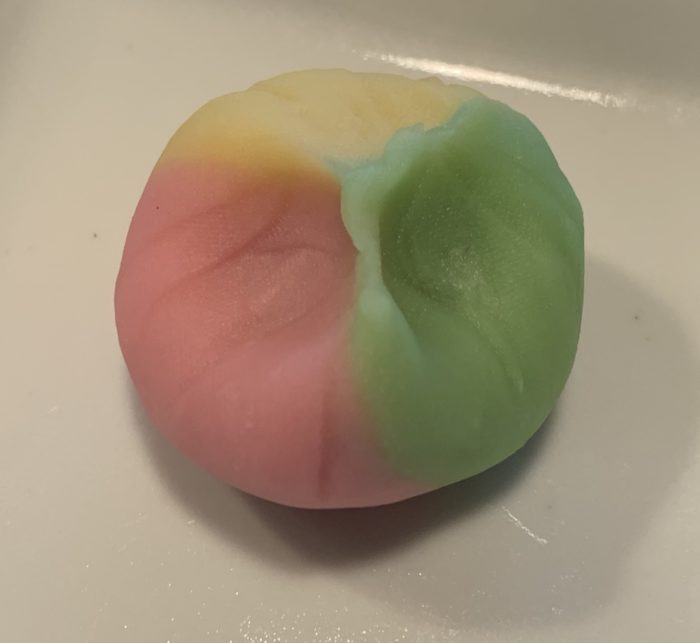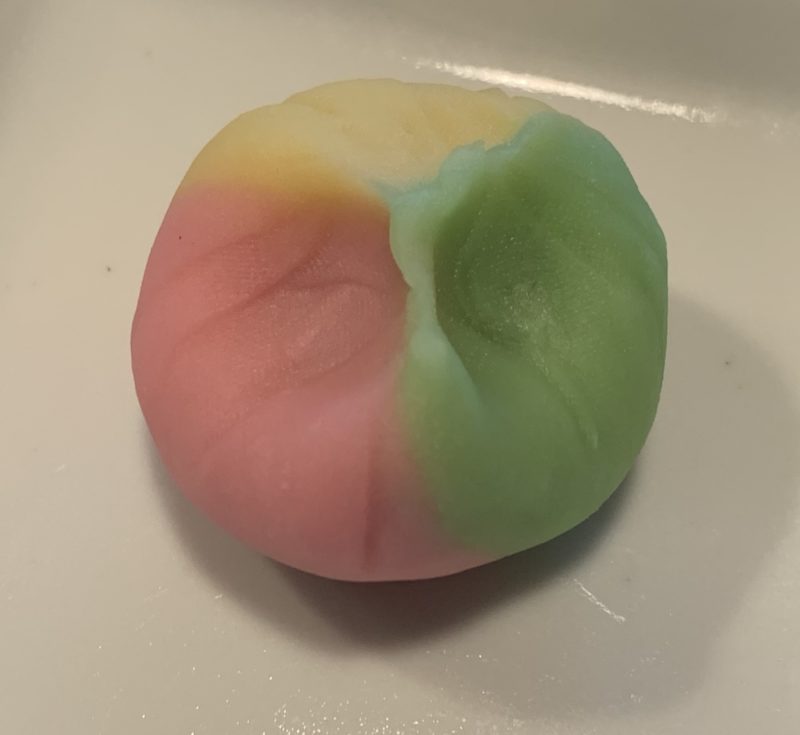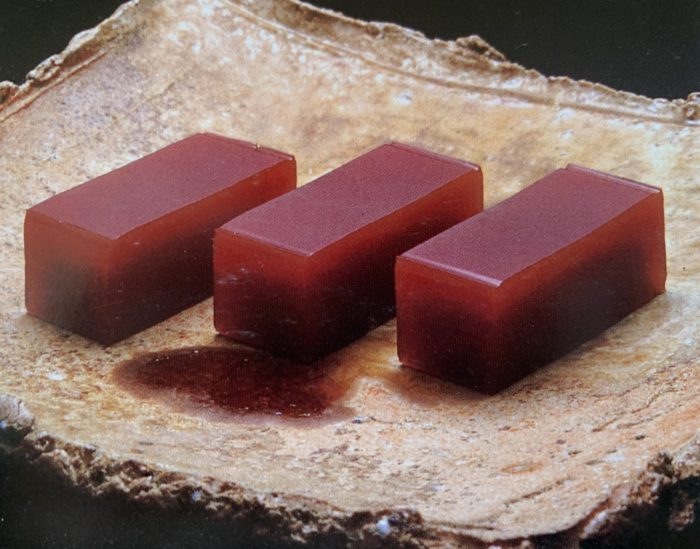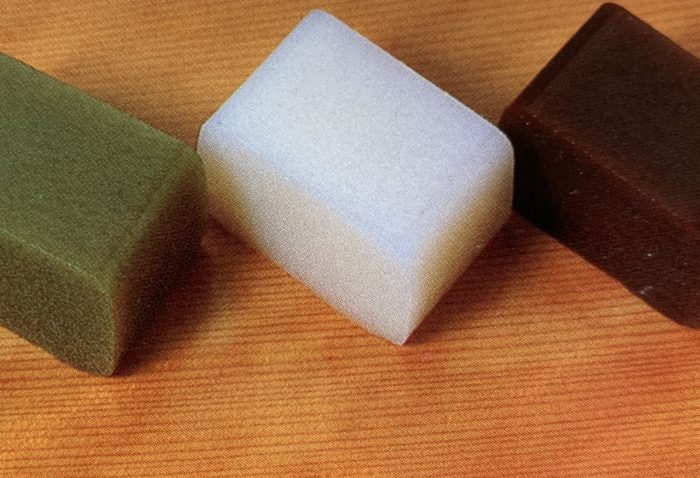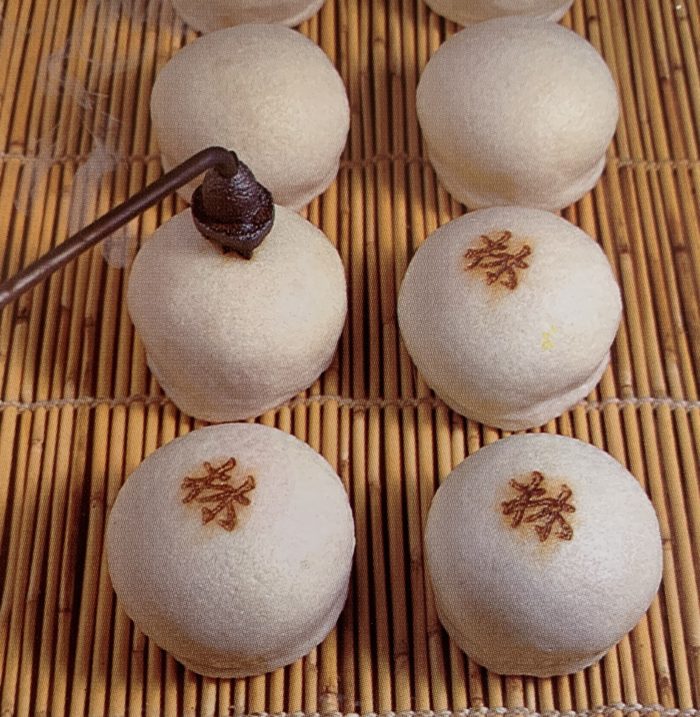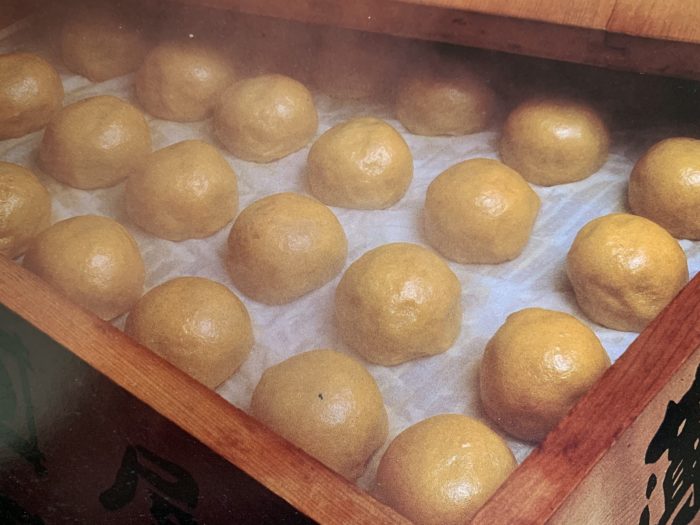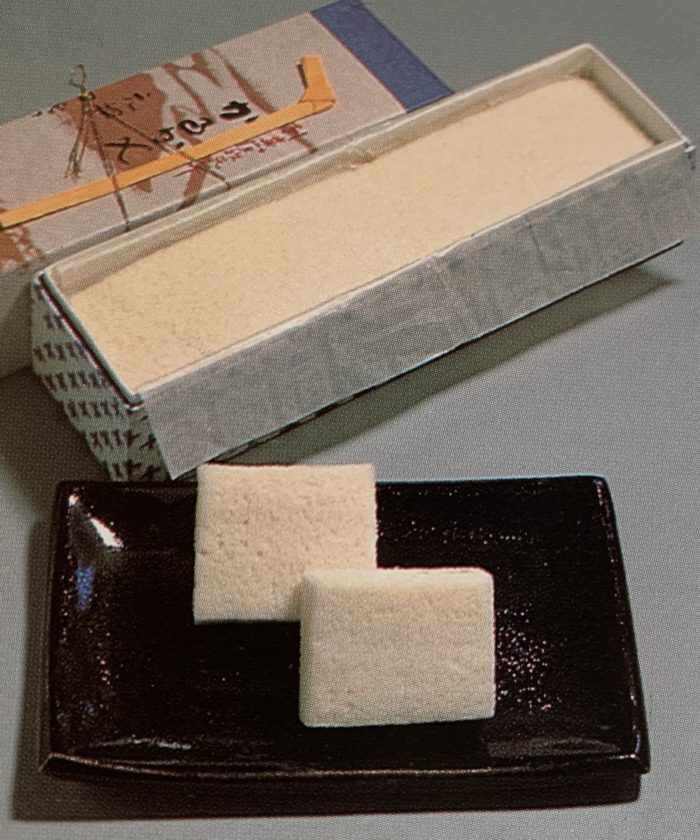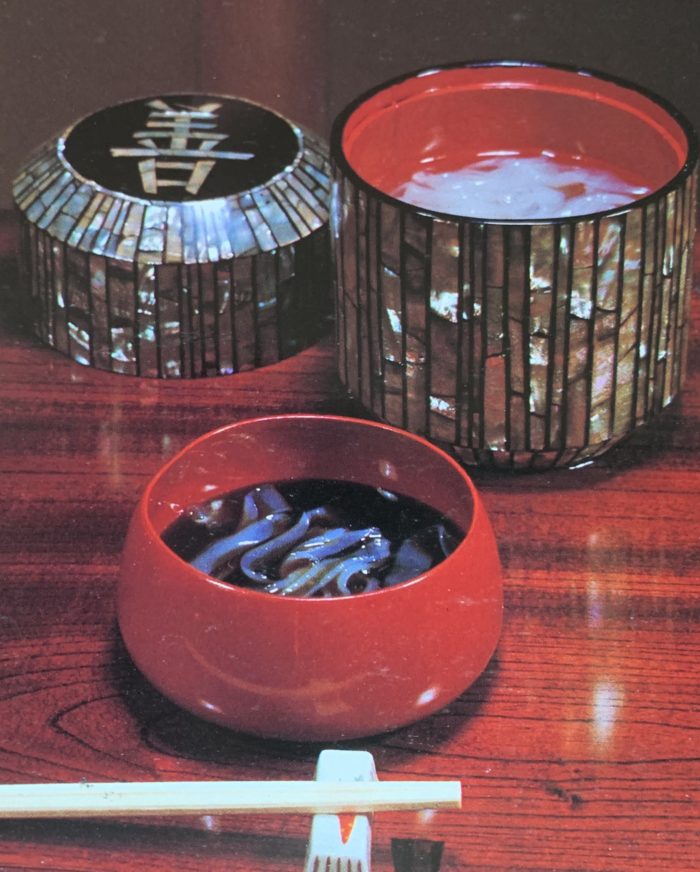The third stage in the history of Japanese sweets is the period of change from the Kamakura period to the Muromachi period (12th -15th century). During this period, Buddhist monks who studied in China spread Zen Buddhism. They popularized not only the religion itself, but also the practice of drinking tea and eating a snack called Tenjin.
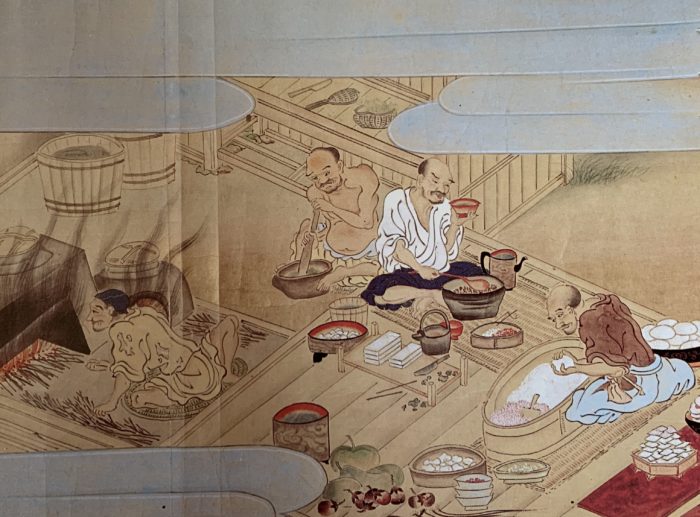
There are two main tenjin they brought back. It was a kan and a bun.
Chinese kan was a solidified jelly filled with meat and liver of beast and fish. However, Japanese Buddhism prohibited eating meat. Instead, yam, sugar, flour, and red bean flour were kneaded and steamed. Furthermore, in the 16th century, it developed into a mixture of agar, sugar, and red beans, and today the prototype of a confection called yokan was created.
Boiled buns were with meat paste in China, but in Japan, they were wrapped in azuki bean paste and steamed. This is the archetype of Manju to date.
At that time, tenjin and fruits were the main confectioneries when drinking tea.
Today’s wagashi is jonamagasi “Haruno(spring field) ” in Kyoto Tawarayayoshitomi. Azuki bean paste is colored in three colors to express the appearance of flowers blooming all at once, and the trees sprouted into the season of young leaves.
